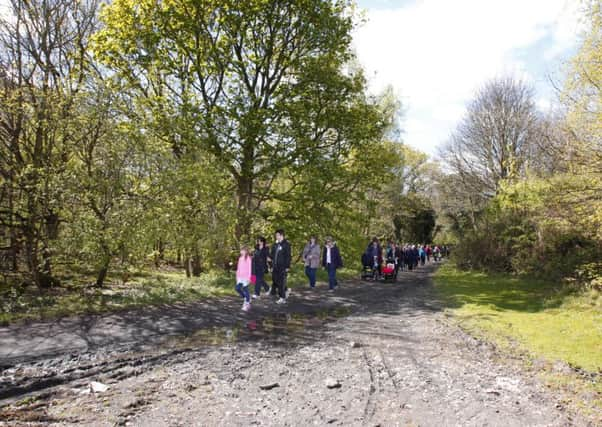Chris Goodman: '˜Footpath is road most people take to freedom'


Most of us who love to tramp our lonelier landscapes don’t usually pay too much attention to the path under our feet, except when it disappears under a veil of freshly fallen snow or hides behind a curtain of mist.
Only then do we start to appreciate the value of the brown and grey ribbon that meanders its unassuming way across the hillside. Some of us prefer to get off the beaten path, but for those who are not yet confident in our navigation skills, the footpath is the road most people take to freedom, solitude and adventure.
Advertisement
Hide AdAdvertisement
Hide AdIncreasingly paths are also being recognised as a vital plank in the rural economy. Scotland’s landscapes and scenery are world renowned. They support a thriving tourism sector of which a growing and significant part is ‘adventure tourism’ – mountain biking, climbing, skiing, kayaking and hill walking. To compete in a global tourist market, the infrastructure underpinning these activities needs to be world class too. Visitors who have a positive experience are much more likely to return, and spread the message, encouraging more visitors to enjoy Scotland’s great outdoors.
A key part of this infrastructure is our upland paths. One of the unique offerings Scotland has is easy accessibility to a huge range of mountaineering conditions (hill walking,scrambling, rock climbing, ice climbing). An hour’s walk from the roadside can place the adventure enthusiast high on a hillside, in the heart of Scotland’s wild land. Peaks such asBen Nevis, Schiehallion and Suilven, to name a few, are climbed by many hundreds of thousands of people every year. This in turn generates millions of pounds of year-round income for rural communities through shops, accommodation providers, bars, restaurants and petrol stations.
Fundamental to the accessibility and enjoyment of a day on the hill is literally the ground beneath our feet. Repair and maintenance of upland footpaths is a never-ending process. Especially on some of the most popular hills, the combination of boots on the ground and heavy rainfall can cause severe erosion over time. As well as damaging vegetation and soils, eroded paths create an unsightly scar on the landscape. Maintaining and repairing paths is a major undertaking. By its nature, most upland pathwork takes place in remote, exposed areas, subject to extreme weather conditions. It is expensive and labour intensive, frequently involving helicopter lifts of materials combined with man-handling tonnes of stone to create a sensitive hand-built finish. The work is carried out by an elite and dedicated handful of contractors who frequently work away from home for months at a time in gruelling conditions, which can involves an hour or two’s trek over steep terrain at the start and finish of each day.
Who foots the bill? Surprisingly, despite, the significant environmental, social and economic public benefits, there is virtually no direct government funding available for upland footpaths. And due to our progressive ‘right-to-roam’ access laws, it is neither desirable nor practical to charge users for walking on paths.
Many of our most popular mountain paths, including the higher reaches of Ben Nevis, Ben Lomond, Schiehallion, BlaBheinn, Ben Lawers, Ben Macdui and Buchaille Etive Mor owned and managed by the National Trust for Scotland and the John Muir Trust, placing a major financial burden on these charities.
In this age of financial austerity there are, inevitably, competing demands for public funds. But establishing a national footpath fund would not require colossal sums of money. Mile for mile, path restoration work is 50,000 times cheaper than motorway construction. Yet it can bring great public benefits.
Research in the past by Scottish Natural Heritage suggests that over seven million visits a year are made to the Scottish hills, of which 85 per cent involve walking on footpaths. Hillwalking is worth an estimated £260m to the economy of the Highlands and Islands. And outdoor activity, as we know, has the potential to transform lives, improve mental and physical well-being and reduce some of the burden on the NHS.
Scotland’s magnificent mountain landscapes are among our greatest assets. For a relatively modest investment in our upland paths, the Scottish Government can help ensure that they remain in tip-top-condition, while sending out the message that we want to encourage more from all social groups to get out and explore the hills.
• Chris Goodman, John Muir Trust Footpath Officer
Find out more about the John Muir Trust’s pathwork at www.johnmuirtrust.org/wildways